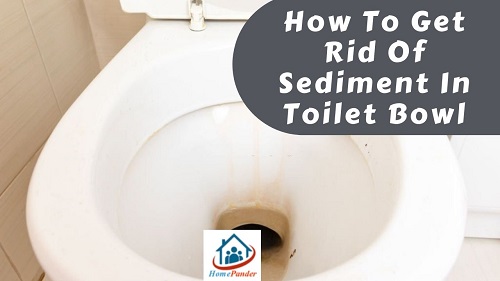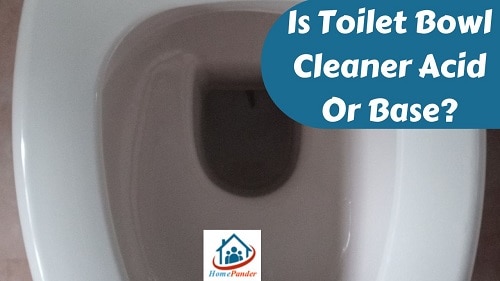Brown toilet water can be a cause for concern and may indicate an underlying issue with your plumbing system. Understanding the reasons behind brown toilet water is essential for addressing the problem effectively.
There are several common causes of brown toilet water, including rusty pipes, excess minerals, iron bacteria, sediment, clogs, leaky pipes, old or damaged toilet parts, and flushing problems.
In the following sections, we will explore each of these causes in detail and provide solutions for prevention and resolution. By identifying the cause of brown toilet water, you can take the necessary steps to restore the cleanliness and functionality of your toilet.
Why Is My Toilet Water Brown
| Cause | Description | Solutions |
|---|---|---|
| Rust in Pipes | Corrosion in iron pipes can leach rust into the water, giving it a brown tint. | Replace rusty pipes or install a water filter. |
| Sediment Buildup | Accumulated minerals and debris in the water supply can discolor toilet water. | Flush the toilet tank and install a sediment filter. |
| Municipal Issues | Problems with the city’s water supply, like water main breaks or maintenance, can temporarily affect water quality. | Contact your local water authority for updates and information. |
| Well Water Issues | Well water may contain natural minerals or contaminants that discolor the water. | Test well water quality and install appropriate filtration systems. |
| Old Plumbing | Outdated plumbing systems can cause water to pick up debris and discoloration. | Consider updating your plumbing system. |
Brown toilet water can be caused by various factors, including rusty pipes, sediment buildup, or contamination. It’s essential to identify and address the underlying issue to ensure safe and clean water in your toilet.
Rusty pipes
Rusty pipes can be a common cause of brown toilet water. Over time, pipes can develop rust due to corrosion or the presence of iron in the water supply. When these rusty pipes come into contact with the toilet water, it can cause the water to turn brown.
The presence of rust in the water not only affects the appearance of the toilet water but can also impact its quality. Rust particles can make the water taste and smell unpleasant, and in some cases, it may even stain the toilet bowl.
To fix brown toilet water caused by rusty pipes, it is important to address the underlying issue of rust in the plumbing system.
This may involve replacing the affected pipes or implementing a water treatment system to remove excess iron from the water supply.
It is recommended to consult a professional plumber to assess the extent of the rust problem and determine the most appropriate solution.
Regular maintenance and inspections of the plumbing system can help prevent the occurrence of rusty pipes and brown toilet water.
Additionally, using a water softener or filter can help reduce the presence of minerals and impurities in the water, minimizing the risk of rust formation.
Excess minerals
Excess minerals in the water supply can also be a culprit for brown toilet water. Certain minerals, such as iron, manganese, and copper, can cause the water to appear discolored.
These minerals can enter the water through various sources, including the pipes, well water, or the municipal water supply.
To fix brown toilet water caused by excess minerals, there are a few steps you can take. First, you can try using a water softener or filter to remove the minerals from the water.
These devices work by exchanging the minerals with sodium or potassium ions, resulting in cleaner and clearer water.
Another option is to use a chemical treatment, such as a rust remover or mineral stain remover, specifically designed for toilets. These products can help break down and remove the mineral deposits that are causing the discoloration.
If the issue persists, it may be necessary to consult a professional plumber. They can assess the water quality and recommend a more comprehensive solution, such as installing a whole-house water filtration system or replacing old pipes that may be contributing to the problem.
Prevention is key when it comes to excess minerals in toilet water. Regular maintenance of your plumbing system, including flushing the pipes and cleaning the toilet tank, can help prevent mineral buildup.
Additionally, testing your water periodically for mineral content can help you identify any issues early on and take appropriate measures to address them.
Iron bacteria
Iron bacteria is a common cause of brown toilet water. Iron bacteria are microorganisms that thrive in environments with high iron content. These bacteria can enter the water supply through various sources, such as well water or corroded pipes.
When iron bacteria are present in the water, they can cause the water to have a rusty or brownish color. This discoloration is often more noticeable in the toilet bowl because the water is stagnant and allows the bacteria to settle and multiply.
To fix brown toilet water caused by iron bacteria, it is important to address the source of the bacteria. This may involve treating the water supply with chlorine or hydrogen peroxide to kill the bacteria. It may also be necessary to clean and disinfect the toilet tank and bowl to remove any existing bacteria.
Regular maintenance is key to preventing the growth of iron bacteria. Flushing the toilet regularly and cleaning the tank and bowl can help prevent the buildup of bacteria. Additionally, installing a water filtration system or using a water softener can help remove excess iron from the water supply.
If the issue persists or if you are unsure about how to address the problem, it is recommended to consult a professional plumber. They can assess the situation and provide guidance on the best course of action to fix the brown toilet water caused by iron bacteria.
Sediment
Sediment refers to particles or debris that can accumulate in the water supply and cause brown toilet water. These particles can come from various sources, such as soil, sand, or minerals that have dissolved in the water. Sediment can enter the water supply through damaged or corroded pipes, or it can be present in well water.
When sediment is present in the water, it can settle in the toilet tank or bowl, causing the water to appear brown or dirty. This can be particularly noticeable when the toilet is flushed or when the water is left stagnant for a period of time.
To fix brown toilet water caused by sediment, it is important to address the source of the sediment. This may involve inspecting and repairing any damaged or corroded pipes that are allowing sediment to enter the water supply. Installing a water filtration system or using a sediment filter can also help remove particles from the water.
Regular maintenance is key to preventing sediment buildup in the toilet. Flushing the toilet regularly and cleaning the tank and bowl can help remove any existing sediment. Additionally, it is important to avoid flushing items that can contribute to sediment, such as paper towels or feminine hygiene products.
If the issue persists or if you are unsure about how to address the problem, it is recommended to consult a professional plumber. They can assess the situation and provide guidance on the best course of action to fix the brown toilet water caused by sediment.
Clogs
Clogs can be another common cause of brown toilet water. When there is a blockage in the pipes or the toilet trap, it can prevent water from flowing freely and cause it to back up. This can lead to stagnant water in the toilet bowl, which can appear brown or discolored.
Clogs can occur due to a variety of reasons, such as flushing excessive amounts of toilet paper, sanitary products, or foreign objects down the toilet. Additionally, mineral deposits or sediment buildup in the pipes can contribute to clogs over time.
To fix brown toilet water caused by clogs, it is important to address the blockage. One way to do this is by using a plunger to try and dislodge the clog. Make sure to create a tight seal around the drain and apply firm pressure to create suction. If the clog persists, a plumbing snake or auger can be used to break up the blockage.
Prevention is key to avoiding clogs and brown toilet water. Avoid flushing large amounts of toilet paper or non-flushable items down the toilet. Consider using a toilet paper that is designed to dissolve easily. Regular maintenance, such as periodic drain cleaning, can also help prevent clogs and keep the water flowing smoothly.
If the clog is severe or if you are unable to resolve the issue on your own, it is recommended to seek the assistance of a professional plumber. They have the expertise and tools to effectively clear clogs and restore normal water flow in your toilet.
Leaky pipes
Leaky pipes can also be a culprit behind brown toilet water. When pipes develop leaks, it allows external contaminants to enter the water supply, leading to discoloration. This can include rust, sediment, or even bacteria that can cause the water to turn brown.
To fix brown toilet water caused by leaky pipes, it is important to locate and repair the source of the leak. This may require the assistance of a professional plumber who can identify the exact location of the leak and make the necessary repairs. In some cases, it may be necessary to replace sections of the pipe if they are severely damaged.
Prevention is key to avoiding brown toilet water from leaky pipes. Regularly inspect your plumbing system for any signs of leaks, such as dampness or water stains. Addressing leaks promptly can help prevent further damage and ensure the water remains clear and clean.
If you suspect that your toilet water is brown due to leaky pipes, it is important to take action to resolve the issue. Ignoring the problem can lead to further damage to your plumbing system and potentially impact the quality of your water.
By addressing leaky pipes promptly, you can ensure that your toilet water remains clear and free from discoloration.
Old or damaged toilet parts
Old or damaged toilet parts can also be a common cause of brown toilet water. Over time, the components of your toilet can deteriorate or become worn out, leading to discoloration of the water.
One of the main culprits is the flapper valve, which is responsible for controlling the flow of water from the tank to the bowl. If the flapper valve is old or damaged, it may not seal properly, allowing water to leak into the bowl and potentially picking up rust or sediment along the way. This can result in brown water in your toilet.
To fix brown toilet water caused by old or damaged toilet parts, it is important to identify the specific component that is causing the issue. In the case of a faulty flapper valve, replacing it with a new one can help restore the proper functioning of your toilet and prevent further discoloration of the water.
Regular maintenance and inspection of your toilet can help identify any worn-out or damaged parts before they cause brown water. If you notice any signs of deterioration, such as cracks or leaks, it is advisable to replace the affected parts promptly.
By addressing old or damaged toilet parts, you can ensure that your toilet water remains clear and free from discoloration. Regular maintenance and timely repairs are key to maintaining the overall performance and functionality of your toilet.
Flushing problems
Flushing problems can be another cause of brown toilet water. When there are issues with the flushing mechanism, it can lead to inadequate water flow or incomplete flushing, resulting in discoloration of the water.
One common flushing problem is a weak flush. This can occur due to a clog in the toilet trap or drain, a partially closed water supply valve, or a malfunctioning flush valve. When the flush is weak, it may not be able to effectively remove waste and debris from the bowl, leading to stagnant water that can turn brown over time.
To fix brown toilet water caused by flushing problems, it is important to identify and address the underlying issue. If there is a clog, using a plunger or a toilet auger can help remove the obstruction and restore proper flushing. Checking and adjusting the water supply valve can also improve the flush by ensuring an adequate flow of water.
In some cases, the flush valve may need to be replaced if it is not functioning properly. This valve is responsible for releasing water from the tank into the bowl during flushing. If it is worn out or damaged, it can result in weak or incomplete flushes.
Regular maintenance and prompt repairs of flushing problems can help prevent brown toilet water. By ensuring that the flushing mechanism is functioning correctly, you can maintain clear and clean water in your toilet.
Prevention
Preventing brown toilet water is essential to maintain a clean and hygienic bathroom. By taking a few preventive measures, you can minimize the chances of encountering this issue. Here are some tips to help you prevent brown toilet water:
1. Regular cleaning: Clean your toilet regularly to remove any buildup of minerals, sediment, or bacteria that can cause discoloration. Use a toilet bowl cleaner and scrub the bowl thoroughly to keep it free from stains and contaminants.
2. Check your water source: If you notice recurring brown water in your toilet, it may be due to issues with your water supply. Contact your water provider to inquire about any ongoing maintenance or repairs that could be affecting the water quality.
3. Install a water filter: Consider installing a water filter or a whole-house filtration system to remove excess minerals, sediment, and bacteria from your water supply. This can help prevent brown water from reaching your toilet.
4. Regular maintenance: Inspect your toilet regularly for any leaks, damaged parts, or clogs. Addressing these issues promptly can prevent them from causing brown water.
5. Flushing properly: Ensure that you flush your toilet properly after each use. This helps to prevent waste and debris from accumulating in the bowl and causing discoloration.
By following these preventive measures, you can maintain clear and clean water in your toilet, ensuring a pleasant and sanitary bathroom experience.
Subheading 10: How to identify the specific cause of brown toilet water
Minerals, Iron Bacteria, and Sediment: DIY Water Testing
Testing your water for minerals, iron bacteria, and sediment can help you identify the specific cause of brown toilet water. By understanding the composition of your water, you can take appropriate measures to address the issue effectively.
One way to test your water is by using a water testing kit. These kits are readily available at hardware stores or online. They typically include test strips or vials that you can use to collect a water sample and analyze it for various contaminants.
To test for minerals, follow the instructions provided with the kit. Usually, you will need to dip a test strip into the water sample and compare the color change to a chart. This will indicate the presence and concentration of minerals such as iron, manganese, or calcium.
For testing iron bacteria, you may need to collect a water sample and send it to a laboratory for analysis. They will examine the sample for the presence of iron bacteria and provide you with a detailed report.
To test for sediment, you can visually inspect the water sample for any particles or cloudiness. Additionally, you can pour the water into a clear container and let it sit undisturbed for a while. If sediment settles at the bottom, it indicates the presence of sediment in your water.
Once you have the test results, you can determine the appropriate course of action. If high mineral content is the cause of brown toilet water, installing a water softener or using a filtration system can help. If iron bacteria or sediment is the issue, you may need to consider disinfection or filtration methods.
By testing your water, you can pinpoint the specific cause of brown toilet water and take the necessary steps to resolve the problem effectively.
Conclusion
In conclusion, brown toilet water can be caused by various factors such as rusty pipes, excess minerals, iron bacteria, sediment, clogs, leaky pipes, old or damaged toilet parts, and flushing problems.
To fix brown toilet water, you can test your water for minerals, iron bacteria, and sediment to identify the specific cause.
Depending on the results, you may need to install a water softener, use a filtration system, consider disinfection or filtration methods, or call a plumber for professional assistance.
Remember to take preventive measures such as regular maintenance and addressing any plumbing issues promptly to avoid brown toilet water in the future.
Related Questions
[faq-schema id=”16833″]




![How to Remove Crystallized Urine [Explained]](https://homepander.com/wp-content/uploads/2022/02/How-To-Remove-Crystallized-Urine.jpg)






![How To Clean Dark Grout That Has Turned White [5 Easy Ways]](https://homepander.com/wp-content/uploads/2021/12/How-To-Clean-Dark-Grout-That-Has-Turned-White.webp)